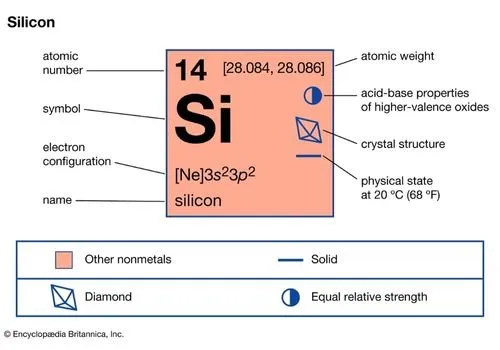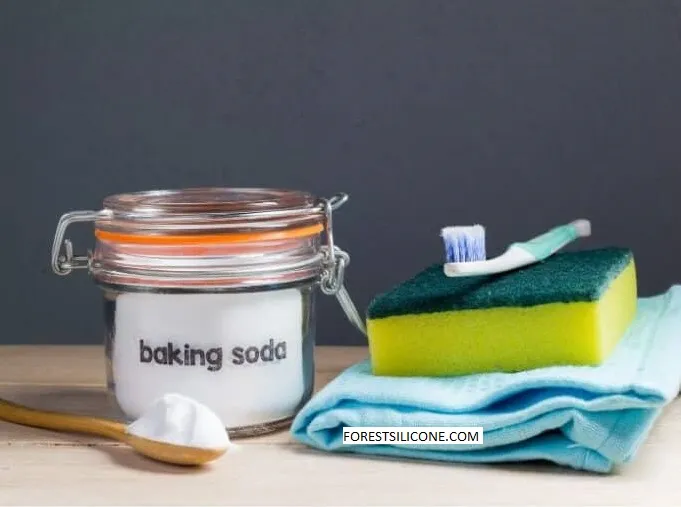Silicone products are fantastic choices, not just because of their vibrant colors and functional designs but also because of their safety, durability, and ease of cleaning. Being unbreakable, resistant to extreme temperatures, and free from harmful chemicals, it’s no wonder they have become favorites. So, to get the smell out of silicone in easy and safe methods, this article will enlighten you.
However, silicone can sometimes hold on to stubborn odors, leaving you wondering how to refresh your essentials. Worry not because we’re here to equip you with three effective methods to eliminate unwanted smells from your silicone and keep your silicone tableware feeling new for years to come!
Properties of Silicone
Because of the characteristics of the molecules used to produce silicone, smells are retained in silicone.

Synthetic silicone is a polymer of silicon, oxygen, and additional elements, usually hydrogen and carbon. It is nonstick, heat-resistant, and has a consistency similar to rubber.
The silicone’s molecules enlarge when heated, absorbing scents and oils. The smells become trapped when the silicone cools.
What Is the Best Way to Get the Stink Out of Silicone?
First, make sure your silicone item is 100% silicone. Check with the manufacturer, or use the “Twist” Test.
The “twist” test is an easy way to assess the quality of a silicone cookware item. All you have to do is take a silicone product in your hands and twist it. If lots of white streaks appear, it indicates the presence of a large number of fillers. Pure silicone (safer) will hold its color when twisted. – Belgoods Bakeware
Note: If you see a white powdery sheen developing on your silicone items, it may not be made from 100% food-grade silicone. When purchasing silicone items, look for “100% FDA-approved food-grade silicone” in the product description.
How to Get Smell out of Silicone: Easy and Safe Method

1.Baking Away the Odors
Our top recommendation for odor removal is harnessing the power of heat through baking. This method leverages the science of thermal expansion, where silicone molecules open up when heated, releasing trapped odor molecules and food particles.
Here’s how to give your silicone a warm welcome:
- Preheat your oven: Set your fan-forced oven to 160°C (300-320°F). Remember, never exceed 220°C (428°F) for your silicone safety.
- Prep your baking sheet: Place your silicone tableware (excluding spoons) on an oven-safe dish or directly on a lined baking sheet.
- Bake it out: Let the oven work its magic for an hour. This extended time at high temperatures ensures thorough release of even deep-seated odors.
- Cool down: Carefully remove the hot items using heat-resistant thongs and allow them to cool completely before touching or using.
- Finishing touches: For a deep clean, wash the silicone with a solution of warm water mixed with baking soda and vinegar. This extra step ensures a thorough refresh.
Note: Due to their reinforced core, silicone spoons are not suitable for baking at high temperatures. Instead, you can safely boil them using the next method.
2.Boiling for Odor Removal
Another practical approach to eliminating odors is to use the trusty process of boiling, which also utilizes heat expansion. By submerging your silicone in boiling water, the trapped odor molecules and food particles are loosened and released due to the expansion of the silicone pores.
Here’s how to remove smell from silicone with boiling water:
- Get the pot bubbling: Fill a pot with water and bring it to a boil.
- Submerge your silicone: Carefully place your silicone items using heat-proof thongs (including spoons this time) in the boiling water, ensuring they are fully submerged.
- Let it simmer: Boil the products for a few minutes, allowing the trapped odors to escape.
- Rinse and repeat: Once done, remove the items with tongs and once cooled, wash them with gentle detergent and rinse them with clean water. If the odor persists, repeat the boiling process for a more intense clean.
This method is safe for all Forestsilicone products, including silicone spoons.
3.Natural Cleaning with Baking Soda and Vinegar or Lemon
If you prefer the natural route, you can use vinegar or baking soda to clean your home of unwanted odors. By reacting chemically with vinegar (or lemon juice), baking soda and vinegar (or both) create a mildly alkaline solution that neutralizes acidic odor molecules.
Here’s how remove smells from silicone using baking soda:
- Create your cleaning paste: Mix equal parts baking soda and vinegar or lemon juice in a bowl to form a paste.
- Apply the paste: Generously apply the paste to your silicone items, ensuring all surfaces are coated.
- Let it sit: Allow the paste to work its magic for about five minutes, giving the chemical reaction time to neutralize the odors. For stubborn odors or grease, let the paste dry completely before washing it off. This extended drying time allows for deeper penetration and potentially better cleaning results. However, remember that the dried paste might require more effort to remove during rinsing.
- Rinse and refresh: Rinse the items thoroughly under hot water to remove the paste and any lingering odors.
Tip: Depending on the thickness of the paste and the environment, “completely dry” might take anywhere from 30 minutes to a few hours.
By following these steps and letting the paste dry for tougher challenges, you can harness the natural cleaning power of baking soda and vinegar (or lemon) to keep your silicone tableware fresh and odor-free!
Choosing the Right Method to Removing Smells from Silicone: Science as Your Guide
Now that you understand the scientific principles behind each method, choosing the best approach for your needs becomes easier:
Strong, Persistent Odors:
Baking is your champion! The extended heat exposure effectively expands pores, releasing even deeply embedded odor molecules.
Milder Odors or Natural Preference:
Boiling offers a quicker alternative, utilizing heat expansion for a decent clean.
Baking soda, vinegar, or lemon provides a natural solution that relies on a chemical reaction to neutralize odors. However, its effectiveness may vary depending on the intensity of the smell.
Additional Considerations:
Time commitment: Baking takes longer but offers the most thorough clean. Boiling is quicker but might require repetition for stubborn smells.
Convenience: Boiling or using natural methods might be easier for smaller items or quick clean-ups.
Sensitivity: If you’re concerned about heat exposure, boiling for shorter periods or natural methods might be suitable.
Remember:
– Always follow the specific instructions and temperature limits for your chosen method and silicone products.
– After treatment, let the silicone cool completely before touching or using it.
– For an extra clean, wash with warm water and gentle dish soap after any method.
– Store your silicone in a clean, dry place to prevent odor buildup.
More Tips for Preventing Odors on Silicone
While you can spend your Saturday afternoon deodorizing all your silicone, it’s easier to know how to prevent the stench in the first place. Here are more tips for avoiding odors on silicone baking mats, bakeware, cups, and more:
Clean it while it’s still hot: When you bake silicone, the molecules expand, letting odors in. When the item cools down, it traps the odors. So if you pull a silicone baking tray out of the oven, try and clean it while it’s still hot.
Avoid abrasives: Using abrasive cleaners can scratch and ruin silicone, creating pores for odors to set in. Use non-abrasive cleaning tools, such as a cloth or specialized sponge.
Dry items in the sun: If air-drying silicone items, why not place them in direct sunlight? This can help to tackle lingering odors.
Store the items correctly: Store your silicone items in airtight containers or bags so they don’t absorb smells while in storage. This also works with ice trays place the ice tray inside a freezer bag to avoid that weird freezer taste and smell.
Cover baking trays: When using baking trays in the oven, cover them with baking paper, so they don’t absorb the odors from whatever you’re cooking. This is a great tip for cooking fish.
By understanding the science behind each method and following these tips, you can make informed choices to keep your silicone fresh and odor-free, ensuring a safe and pleasant dining experience for your little ones.
Beyond the Basics: Extending the Longevity of Your Silicone
Explore our next blog post, “Can You Boil Silicone?” You’ll find expert tips on proper cleaning, storage, and usage to maximize the lifespan and performance of your Forestsilicone products.
Remember, choosing the right approach for odor removal is just one step in ensuring the long-term enjoyment of your silicone. With some understanding and TC, your silicone can remain a vibrant and functional partner in your kitchen for years to come!
No More Smelly Silicone
Even though silicone is reasonably priced and generally non-toxic, scents can be complex to get rid of. It can adhere to musty odors because it is somewhat absorbent when heated, which can seep into your subsequent meal.
We have listed five methods for cleaning silicone odors to make your kitchenware smell as lovely as new. Depending on the situation, we heat the objects in the oven or use soapy water.
Always check if your silicone items are dishwasher—or oven-safe before using the respective methods. For instance, some items, like spatulas or containers, might need to be oven-safe.
FAQ
How long should I bake silicone?
To effectively remove odors, you can bake Brightberry silicone items for 1 hour at a temperature of 160°C (300-320°F). However, please avoid baking the spoons as they may not withstand the high temperatures.
Can boiling damage my silicone?
No, silicone is heat-resistant and boiling it is a safe method for sterilizing or odor removal.
Is it safe to put silicone in the dishwasher?
Yes, Forestsilicone Products is designed to be dishwasher safe. For best results, place it on the top rack of your dishwasher. We recommend using a normal wash setting rather than high-temperature settings. High temperatures can sometimes cause silicone to retain odors. This precaution helps ensure your silicone remains odor-free and in top condition.
What should I avoid when cleaning silicone?
Avoid using harsh or heavily scented dish soaps, especially those with essential oils, antibacterial agents, or moisturizers. These can leave a soapy aftertaste on silicone. Also, steer clear of abrasive cleaners or pads to prevent damaging the silicone surface.
Can I use lemon instead of vinegar with baking soda for cleaning silicone?
Yes, lemon juice can be a natural alternative to vinegar for odor removal in your silicone cleaning routine.
If you have any other questions about these methods or need further assistance, please don’t hesitate to contact us